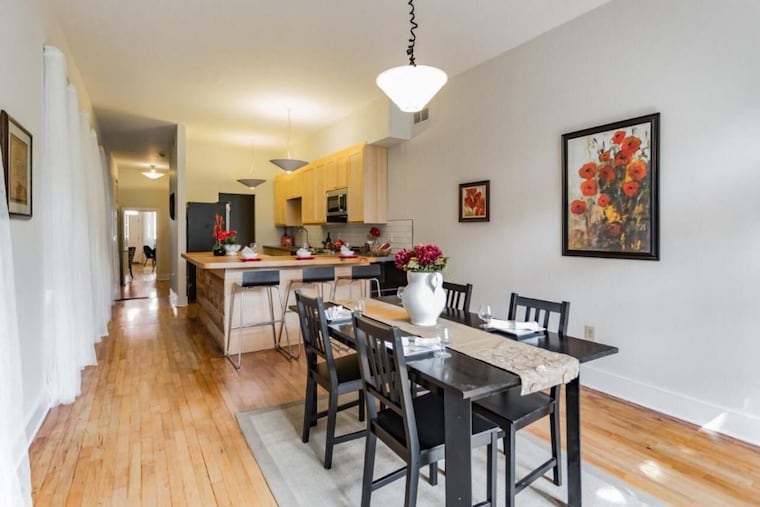How home decor became a gray area
The real estate market says gray is the "perfect" neutral to attract buyers. OK, as long as I don't have to live there.

As the Inquirer's real estate editor, I look at photos of beautiful houses all day. Basically, I get paid to (virtually) peek in windows. It's a great gig.
But lately, I'm a bit blue from seeing so much gray: gray walls, gray cabinets, and gray flooring in gray kitchens, gray bedrooms, and gray living rooms — even gray nurseries.
When I was a kid, gray was reserved for the concrete blocks of an unfinished basement. Now it's the "perfect" neutral, typifying urban sophistication.
"People think gray, especially on the lighter side, looks clean, crisp and fresh," said Deborah Solo, owner of Solo Realty Co. in Philadelphia.
Before putting her own house on the market recently, Solo repainted much of the interior gray.
"Color is a powerful tool for a home seller," said Kerrie Kelly, creative director of Kerrie Kelly Design Lab and a consultant with the real estate website Zillow. "Using fresh, natural-looking wall colors can not only make a home feel larger but can also help future buyers more easily envision themselves living in the space."
Solo suspects that popular colors, like other design trends, spread like falling dominoes: "People stick with what they know and what they see in other houses, so as more people use gray, more people choose it."
The gray trend emerged in 2010 with pillows, accent walls, area rugs, and smaller decor items, Kelly said. Now it's evolved to interior and exterior paint palettes, flooring, tile, and more. She predicts that "gray's timelessness will linger."
Companies certainly have stepped up to meet the demand. Home Depot's Behr "Life in Gray" line, for example, boasts more than 60 shades, ranging from "silver polish" to "carbon." For the kitchen and bath, Kohler offers gray sinks, tubs and toilets.
I get that gray is extremely versatile. Accessorize with a red lamp, a deep blue rug, or a purple chair, and you have a subtly dramatic room.
Perhaps the most persuasive argument I've heard came from a Doylestown homeowner who noted that charcoal-colored tile grout hides dirt. Less cleaning? Great!
Gray is a strong performer in Zillow's "paint color analysis," which looks at tens of thousands of listing photos to see how certain paint colors impact sale price. Walls in shades of light gray or blue may sell for as much as $5,400 more, the 2017 study found.
But before you sprint to the store and paint your powder room periwinkle, note that the data set is still small, and some results are contradictory. Last year's price enhancer — a yellow kitchen — appears to be a dud in 2017. Many factors beyond color can affect sale price.
Yielding to the trend, as my husband and I recently contemplated selling our Colonial, the first item on his to do list was "repaint in gray."
My reaction — "No way!" — was nowhere neutral.
When I walk through a front door, I want to be embraced by the warmth of soft earth tones — basically, a house hug. I concede gray's potential elegance, but for the most part, I find it cold, industrial, and a bit depressing. For me, gray is for elephants and hippopotamuses.
"I don't like it, either," he argued, "but the point is we're moving."
Like my spouse, Solo, who is downsizing after 30 years in Northern Liberties, said that when she renovated her home the first time, "I did it for me. The second time, I had to think about what more people would want to see and like."
After sifting through stacks of paint chips and virtually painting and repainting our dining room through a design app, my husband and I ultimately compromised on creamy buff, a less trendy but still utilitarian beige.
Better still, after house-hunting a bit, we decided to refinance and stay put. Now, with no market pressure pushing us to conform, we can wait until the next color trend comes along.